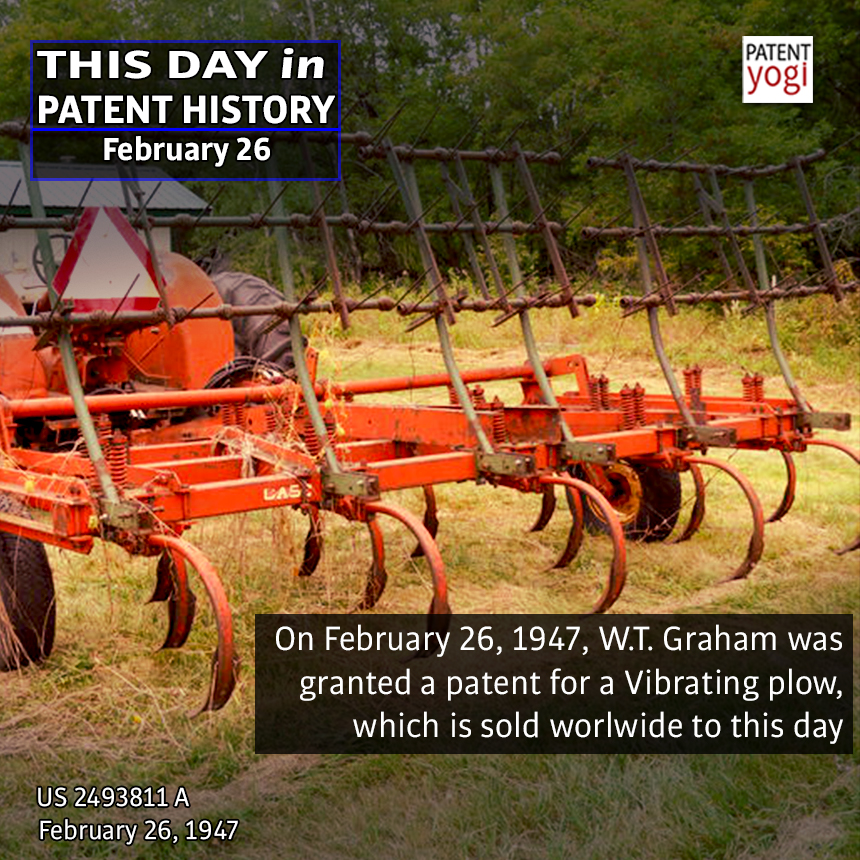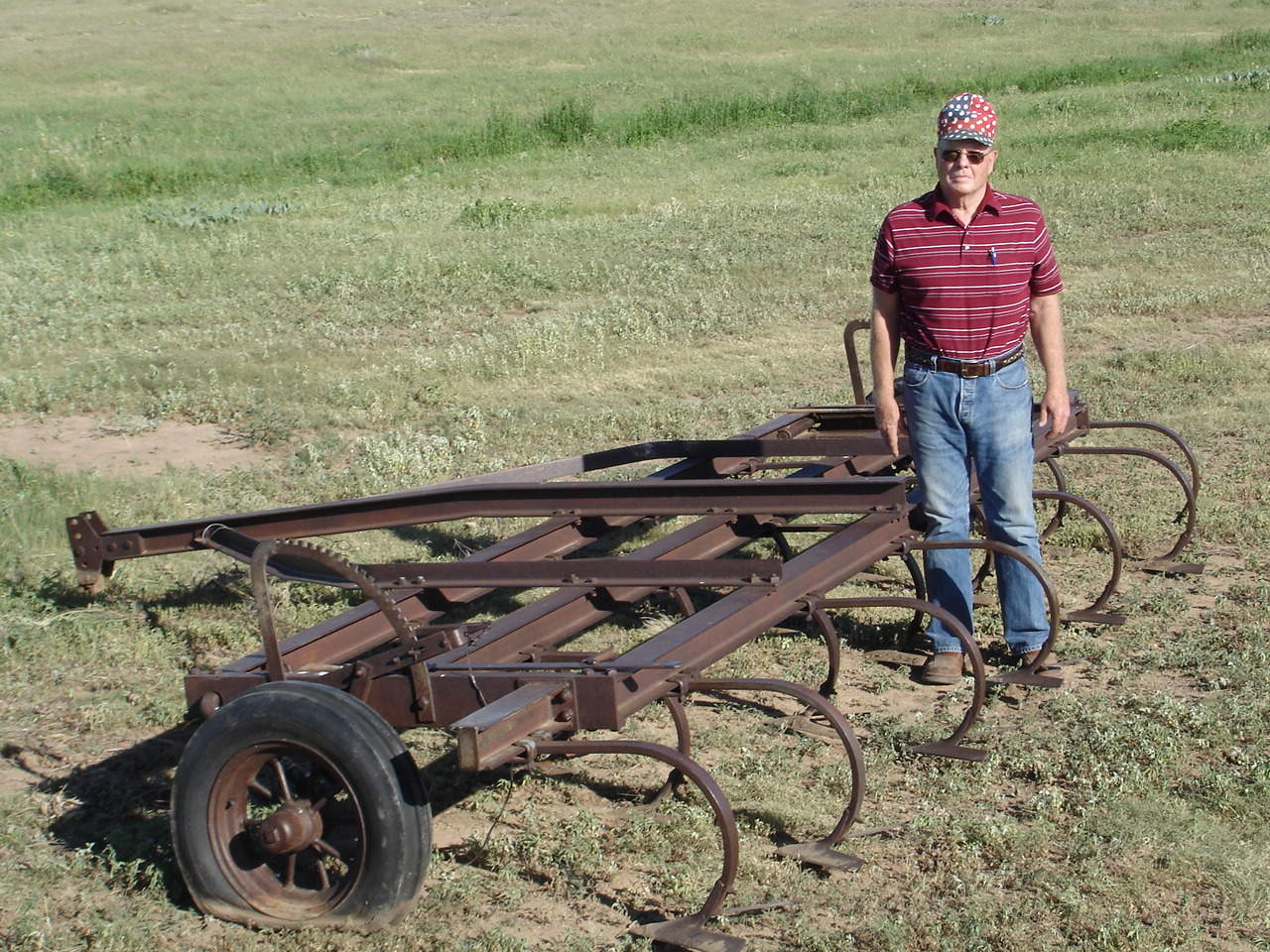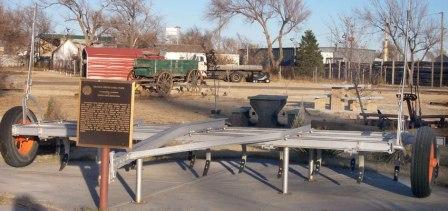
On February 26, 1947, W.T. Graham was granted a patent for a Vibrating plow, which is sold worlwide to this day. Graham and Hoeme (partners) marketed this plow as “The Plow To Save The Plains”. This Chisel Plow helped control wind Erosion During The Seven-Year Drought Of The 1950’s, When About Half Of Great Plains Farmers Are Estimated To Have Owned Chisel Plows.
The patented plow includes multiple laterally arranged ground conditioning tools that work under the surface to heave and break the soil and form alternate ridges and furrows having exposed surfaces composed of clods, straw and other natural mulching material normally occurring on a field. Plows of this character have proved most desirable because the ground prepared therewith is in condition for optimum moisture conservation and it is substantially free from erosion by water and wind. Also, the top soil does not dry out and form a hard crust since it is protected from the wind and sun by the mulching material with the result that better crop yields are obtained.

Graham also discovered that such plows can be made more effective by providing a pronounced pumping or vibratory action of the ground working tools. This action works the fine soils toward the bottom for forming the seed bed and the coarse materials to the top for forming a better mulch and moisture collecting surface. The pumping action also produces alternating pockets and ridges transversely of the bottoms of the furrows for collecting and storing small pools of moisture from which moisture is supplied to the loose soil of the seed bed by capillary action during dry periods. I have also determined that the pumping action of the tools results in an easier pulling plow and that less motive power is required.
Graham v. John Deere Co.
In 1965, W. T. Graham, sued the John Deere Co. for patent infringement of this patent (refer Graham v. John Deere Co.). The judgement was not positive for Graham. But this court case is considered to be a landmark case, as it clarified the nonobviousness requirement in United States patent law, set forth in 35 U.S.C. § 103. The courts helps that the nonobviousness requirement set forth in 35 U.S.C. §103 was meant to codify the previous common law requirement that an invention be a significant improvement in the art.
In Graham v. John Deere, a test was formulated for the issue of patentability under §103. Under §103,
1. “the scope and content of the prior art are to be determined;
2. “differences between the prior art and the claims at issue are to be ascertained;” and
3. “the level of ordinary skill in the pertinent art resolved.”
And … “[s]uch secondary considerations as commercial sucees long felt but unsolved needs, failure of others, etc. …may have relevancy.”
The American Society of Agricultural Engineers honored the contributions of the W.T. Graham with a Historic Agricultural Engineering landmark, which was presented in a ceremony May 27 in Hooker.

Sources: Wikipedia; Graham-Hoeme plow receives recognition
Patent Information
Publication number: US2493811 A
Patent Title: Vibrating plow and mounting therefor
Publication type: Grant
Publication date: 10 Jan 1950
Filing date: 26 Feb 1947
Priority date: 26 Feb 1947
Inventors: Graham William T
Original Assignee: Graham William T

